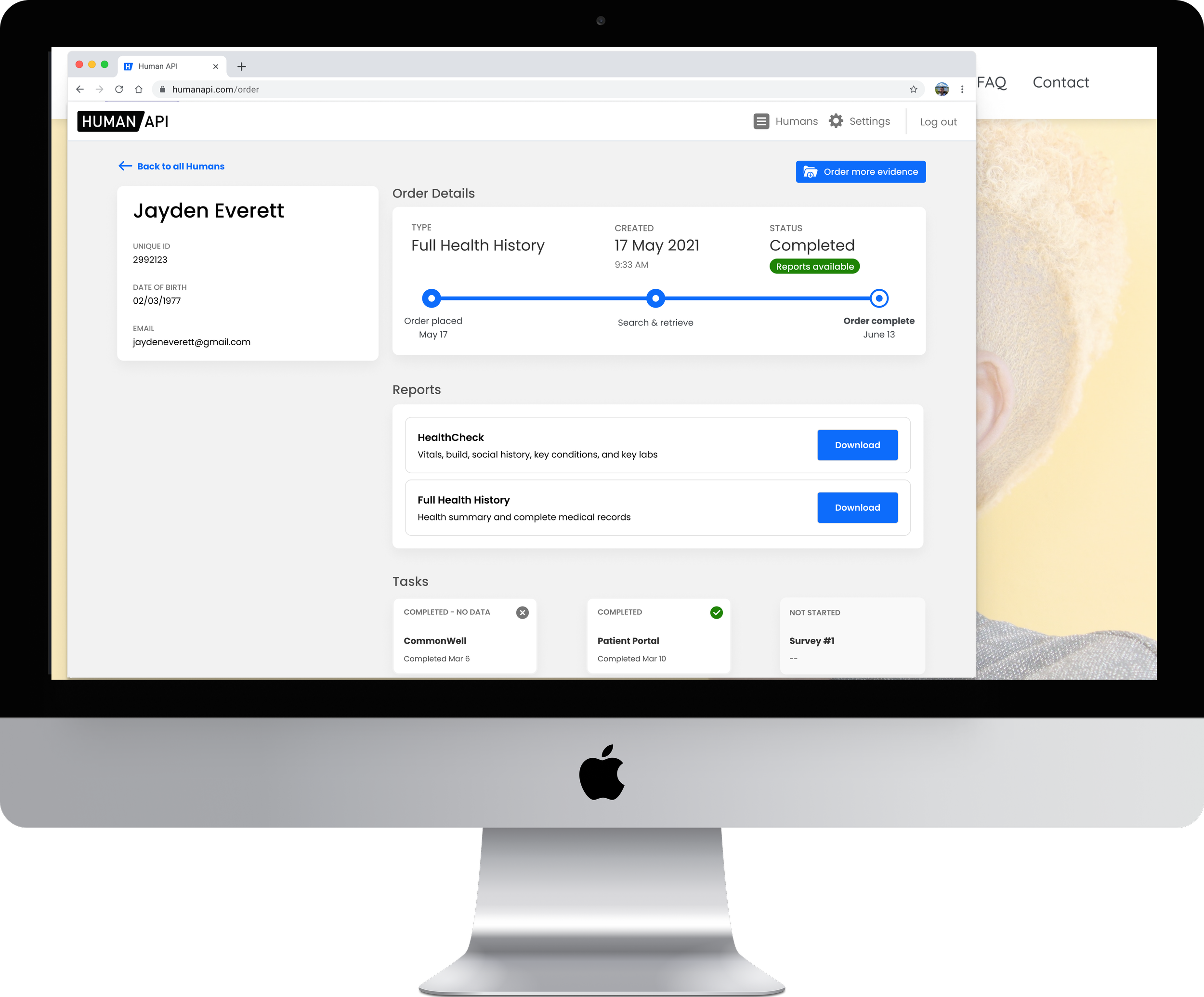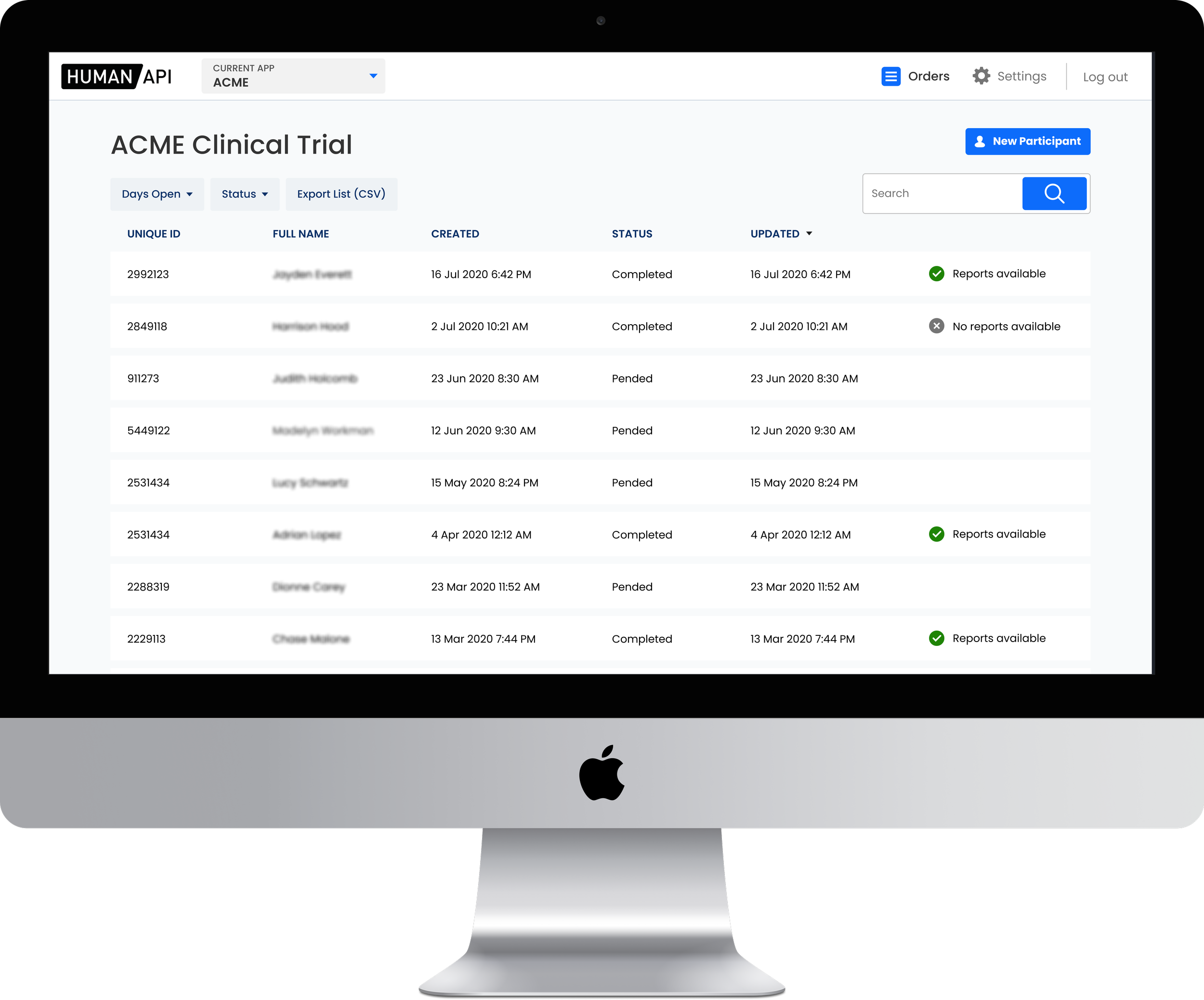How building next-gen patient registries are powering the future of clinical trials and patient services
The answer to every question I'm going to ask is "yes." Ready?
Imagine having the ability to interact with millions of engaged patients who voluntarily shared their health data with the life sciences community.
Could you better understand patients in the real world to gain new insights for new opportunities?
Could you quickly and precisely match patients to clinical trials that study potentially life-changing therapies?
Could you proactively engage patients earlier in their treatment journey with personalized resources to improve outcomes?
I’m here to tell you how.
The Current State of Patient Engagement
According to a recent publication issued by Deloitte, many life sciences companies are already launching new patient engagement programs and initiatives to execute patient marketing, communications, and deliver support services. These programs also give life sciences organizations more information about how patients are doing in “the wild” and create channels through which they can engage patients in the future. This is a great start. Nonetheless, effective patient engagement programs require more than a computer-generated patient profile, they require a deep understanding of each individual patient and their unique health experience.
On the R&D side, many life sciences organizations are beginning to leverage technology that enables sponsors to identify ideal clinical research sites and physicians for clinical trials based on their patient population. And once identified, physicians recruit patients to participate in trials. But, this inherently limits reach to patients based on whether a physician is participating in the network, or has deployed the technology at their site. For example, the National Cancer Institute conducted a trends study earlier this year, which revealed that even though an estimated 62.3% of patients would seek information about clinical trials from their providers, only 9% of people surveyed have ever been invited to participate in a clinical trial.
We believe there’s a better way.
From our early days as a company, we’ve held the belief that radical innovation is possible when bringing to market technology that securely facilitates the connection of patients with their health data — no matter where that data is located — and sharing that patient-consented data with organizations in ways that benefit all.
Read on to learn about the use cases we help power for leading life sciences organizations that are leveraging Human API to build next-gen patient registries, create longer-lasting relationships with patients, and transforming clinical research and delivery of personalized patient services.
Building a Rich Patient Registry
At Human API, we help Life Sciences organizations accelerate clinical research and promote positive patient outcomes by engaging with patients directly for access to health data.
Because of this, we’re no stranger to building out rich patient registries.
When we created Human API for Patient Registries, we aimed to help our life sciences clients streamline patient engagement and the acquisition of health data for any, and all, existing patient touch points.
THE RESULTS:
360 degree views of each patient: Aggregated patient-consented health data from various sources (EMR, wearables, pharmacy, etc.) create a true 360 degree view of each participant and a longitudinal record of health history over time.
Patients as partners: Long-lasting, mutually beneficial relationships with patients deliver the insights needed to provide personalized support, services, and opportunities throughout the patient care journey to promote positive outcomes.
Valuable data asset: A multi-purpose data asset that can be leveraged in identified or de-identified fashion across the organization, from R&D to post-market.
Conducting Precise, Direct-to-Patient Recruiting for Clinical Trials
Human API for Clinical Trial Recruiting enables customers to query the registry to create cohorts and trigger outreach for clinical trial recruitment.
THE RESULTS:
Precise matching: Real-world data (RWD), such as electronic health records, is leveraged to identify eligible patients for trials based on conditions, procedures, medications, demographics, location, etc.
Direct engagement: Opportunities to engage directly with motivated patients that have already expressed interest in being contacted for research opportunities.
Faster enrollment: Streamlined consent and the ability to share collected health with sites improves site confidence in the referral and accelerates the determination of trial eligibility to enroll sooner.
Providing Timely, Personalized Patient Services
Human API for Patient Services enables customers to perform personalized outreach for patient support programs and digital companion applications.
THE RESULTS
Long-term engagement: Longer-term relationships with patients, using data to identify the right patient at the right risk level and support them through the entire care journey, to promote positive outcomes.
Timely, personalized support: Understanding of patient-specific clinical encounters and pharmacy information to provide timely, personalized outreach to specific patients such as encouraging medication adherence.
Real outcomes: Real-time, patient-level insights based on fully identifiable real-world data (RWD) to understand patient outcomes at the most granular level, leading to a better understanding of the patient population as a whole.
By engaging the consumer and connecting electronic data sources, you gain access to fully identifiable real world data. Additionally, we leverage best-in-class partnerships to maximize further tokenized and de-identified data sets to create robust longitudinal records, fueling additional research and data analysis (e.g., HEOR, RWE).
How do you build a patient registry with Human API?
Human API provides a fully hosted, HIPAA-compliant solution for patient registries, including patient onboarding & engagement, data management, and analytics capabilities. Life sciences organizations can use Human API to build a patient registry by tapping into any existing patient touch point. For example: clinical trial screening, patient services programs, digital companion applications, and disease registries.
Life sciences organizations that capitalize on their use of Human API’s platform have the added benefit of engaging with Human API’s own captive consumer base, which continues to grow with a robustly diverse population from across the US.
Let’s take a closer look.
The Patient Experience
In today’s highly digital world, a great user experience is critical to ensuring solutions delivered to consumers are accepted. We also knew our solution needed to be flexible so that it could be seamlessly and easily integrated into our customer’s existing technology ecosystem. What we came up with is a highly configurable and flexible participant onboarding experience that can be incorporated into existing participant engagement applications and portals, or stand on its own.
The participant onboarding workflow can be launched from customized and branded landing pages, emails, or even SMS texts — with the ability to configure the platform to automatically send out reminder emails and confirmation emails when participants complete participant onboarding.
Throughout Human API’s participant experience there are also built-in consents, including within emails, campaign-specific landing pages, and pages to connect each data source. Consents are easily configured to include customer-specific language for data sharing, contacting for research opportunities, and other important language.
With the ability to configure and deploy a variety of tasks to participants— like surveys, questionnaires, and ePROs—responses to tasks can be securely captured and saved alongside other participant data.
One of our core strengths at Human API is enabling participants to authorize and share their health data, from all sources where their data is stored. Participant data can be shared via electronic health records (EHRs) networks, patient portals, medical record retrieval vendors, labs, wearable devices, and even fitness apps. What our team has built uniquely combines multiple authorization modalities and data retrieval methods into a single, seamless user experience.
Every individual who passes through the Human API process has the ability to create a My Human API (My HAPI) account to view and manage their health data. Within My HAPI, participants can view their health data, connect new health data sources, and share health data with individuals and organizations. Participants can also manage data sharing over time (e.g., revoke access).
The Researcher Experience
For administrators and researchers, Human API has an enterprise portal to view population-level data about the registry and interrogate the data of specific participants. This information is also accessible via API. Through the platform’s data processing pipeline and proprietary normalization model, we are able to take thousands of unique data sources and formats and produce one, uniform output:
Standard data schema
Deduplicated, merged records
Standard medical codes (Loinc, ICD, Snomed, RxNorm, etc)
Normalized values, units, and reference ranges for common results
Learn about our proprietary data network.
In addition to the underlying health data, we’ve amassed an ever-growing library of clinical concepts, applied to participants and specific clinical data elements, to make the data even easier to use. These concepts range from simple (a uniform way to pull all the “LDL Cholesterol” test values) to complex (a concept of “High Cholesterol” assigned at the participant level which is built on a variety of supporting evidence—including diagnosis, test results, medications etc.).
With our analytics module, customers are able to further explore their data. The robust data model provides users with an opportunity to interrogate and visualize the population leveraging patient demographics, clinical observations (diagnosis, medications, test results, etc), survey results, and supplemental data sets provided by customers.
Researchers can access the analytics platform to identify and define their own cohorts, pulling lists of eligible participants for follow-up outreach (e.g., clinical trial recruiting). Cohorts can be saved as a set of filter criteria, which can be reused and merged with other filters to refine and adapt the cohort definition, as needed. Cohorts created in the analytics module can be used to target specific outreach initiatives, or to assign tasks for individuals in that cohort.
Lastly, activity throughout the participant journey is captured — including email engagement, task engagement and completion rates, and rates of data retrieval. Human API’s technology tracks, analyzes, and makes this information available to customers.
Patient Engagement Strategies to Build Next-Gen Patient Registries
Life Sciences organizations hold the potential to impact and transform the lives of millions around the world, for generations to come, through the intentional application of science, design, data, and technology. So far, progress has been stalled by limited patient engagement opportunities and lack of access to real-world health data.
With end-to-end patient engagement and health intelligence to provide unified, structured access to patient-consented health data, Life Sciences organizations now have a clear path to build next-generation patient registries, and transform the clinical research and delivery of personalized patient services, ultimately improving patient outcomes and delivering life-changing therapies to patients faster.
Talk to a product expert for more information about our life sciences solutions.










